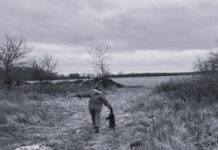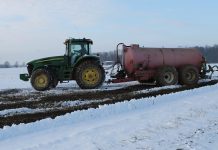If you had a nickel for every magazine story that detailed the best ideas to pass your farm or ranch on to your children and grandchildren, you’d have one wealthy farm or ranch to pass on.
If, however, you had a nickel for every magazine story that detailed what economic, environmental and political actions are needed now to ensure your children and grandchildren will farm or ranch, you’d be short of both nickels and ideas.
It’s not like the ideas and the science behind ’em don’t exist. In fact, April 15 marked the first anniversary of the most prestigious, thorough and widely accepted — except for the U.S., Canada and Australia — report on global agriculture’s future you never heard of.
IAASTD
The report, named the International Assessment of Agricultural Science and Technology for Development, or IAASTD, is the 2,500-page result of 400 food, agriculture, business and government experts working four years under the World Bank and the UN’s Food and Agriculture Organization.
The goal, noted one of the report’s many authors, was to “take stock of our knowledge, technology and policy, and help find a way to feed the world…”
By two key measures, the IAASTD is not just another horse-choking snow job.
First, it couldn’t be, Nobel Laureate and IAASTD leader Bob Watson told NewScientist.com just before the report’s release a year ago.
“Agriculture can do more than just focus on production,” Watson offered. Farming can “help supply clean water, protect biodiversity” and “be managed in a way that manages our soil sustainability.”
Tall order
That’s a tall order, but global agriculture is a tall glass of water: 30 percent of the world’s population farms 40 percent of the earth’s land surface not locked in ice.
That makes agriculture the biggest, most widespread global enterprise.
Second key point
But — and here’s the second key point in the report — for the world to feed itself in 50 years, today’s “one size fits all” approach to “industrial agriculture” must change, says another report author, Swiss biologist Angelika Hilbeck.
Today’s dependence on “industrial monoculture,” explained Hilbeck in a published defense of IAASTD, are not sufficient to “abolish poverty and hunger and (have) caused irreversible damage to the environment everywhere it (has been) introduced.”
More diversity, more multi-functionality — to account for different farming resources, knowledge, skill, markets, technology and a myriad of other factors — will better meet the future needs of 77 million new bellies a year, explains Hilbeck, than today’s single, high-tech silver bullet.
Heartburn
That view gave global biotech firms heartburn.
One Syngenta geneticist, Deborah Keith, selected to be a co-author of part of the IAASTD, left the effort at the last minute because she and her colleagues, she wrote in a defense that was posted at NewScientist.com, believe there “was a blatant disregard for the benefits of existing technologies, and for technology’s potential to support agriculture’s future efforts to meet future crop needs.”
In IAASTD, added Keith, “Sadly, social science seems to have taken the place of scientific analysis.” (That view is principally why the U.S. did not sign the report.)
Not so, fired back Hilbeck in print; six decades of productivity gains in agriculture have been critical to meet growing food needs. And they will be in the future, too.
However, she wrote, after 20 years of commercial development and sales of genetically modified seed, two-thirds of all GM seed is still devoted to one crop, soybeans, and one trait, herbicide resistance.
Given that thin record, biotech, Hilbeck opined, is “living on a lot of promises.”
Summary
A summary of the IAASTD, press coverage of the debate surrounding it and ideas for farming’s future — and those of your children and grandchildren’s — can be found at www.agassessment.org/.













